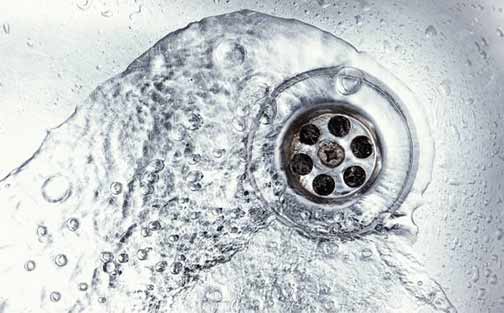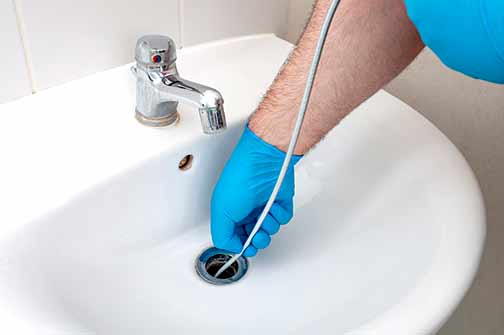
Proper drain maintenance is crucial for ensuring the smooth operation of your home’s plumbing system. Neglecting your drains can lead to severe damage, costly repairs, and significant inconvenience. By being vigilant and proactive, you can identify potential issues early and take the necessary steps to address them before they escalate.
Maintaining your drains not only helps to keep your plumbing system functioning efficiently but also prevents potential health hazards and preserves the structural integrity of your home.
Slow Draining Water: A Common Indicator of Drain Problems
One of the most common signs of drain damage is water that drains slowly from sinks, bathtubs, or showers. This issue often indicates a partial blockage in the drain, which can be caused by the buildup of hair, soap scum, grease, or other debris.
If left untreated, these blockages can worsen over time, leading to complete clogs and potential damage to your plumbing system. Slow draining water can be particularly problematic in high-traffic areas of your home, such as the kitchen and bathroom, where frequent use can exacerbate the issue.
Unpleasant Odors: A Warning Sign of Drainage Issues
Foul smells emanating from your drains are a clear indication that something is amiss. These odors are typically caused by trapped food particles, grease, or other organic matter decomposing within the pipes. In some cases, unpleasant smells can also be a sign of sewer gas escaping from a damaged drain.
Addressing the source of these odors promptly can help prevent more serious issues from developing. Additionally, persistent odors can create an unpleasant living environment and may pose health risks if left unaddressed.
Gurgling Sounds: An Audible Clue to Drain Damage
Strange gurgling noises coming from your drains can be a red flag for potential problems. These sounds often occur when air is trapped in the pipes due to a blockage or improper venting. Ignoring these noises can lead to more significant issues, such as water backup and potential damage to your plumbing system.
Gurgling sounds can also indicate that your plumbing system is not functioning as efficiently as it should, which can result in higher water bills and increased wear and tear on your pipes.
Water Backups: A Serious Symptom of Drain Blockages
One of the most alarming signs of drain damage is water backing up into your sinks, bathtubs, or showers. This issue is usually caused by a severe blockage in the drain, preventing water from flowing freely through the pipes. In some cases, water backups can also be a sign of a more extensive problem, such as a damaged sewer line.
It’s essential to address water backups promptly to prevent further damage and potential health hazards. Water backups can lead to water damage, mold growth, and unsanitary conditions in your home, making it crucial to resolve the issue as quickly as possible.
Recurring Clogs: A Persistent Drainage Problem
If you find yourself frequently dealing with clogs in the same drain, it may be a sign of a more significant issue. Recurring clogs can indicate that there is a persistent blockage or damage within the drain that needs to be addressed.
Ignoring this problem can lead to more severe damage and costly repairs down the line. Recurring clogs can also disrupt your daily routine and cause frustration, making it important to identify and resolve the underlying issue to restore proper drainage in your home.

Water Stains and Dampness: Visual Indicators of Drain Damage
Water stains and dampness around your home can be a sign of drain damage. These issues often occur when water is leaking from damaged pipes or drains, causing moisture to accumulate on walls, floors, or ceilings. Over time, this moisture can lead to mold growth, structural damage, and other costly problems.
Identifying and addressing the source of water stains and dampness early can help prevent more severe issues from developing. Water stains and dampness can also indicate hidden leaks, which can be challenging to detect without professional assistance.
Increased Pest Activity: An Unusual Sign of Drain Issues
While it may not be immediately apparent, increased pest activity around your home can be a sign of drain damage. Pests such as rodents, insects, and other critters are often attracted to the moisture and food particles found in damaged drains.
Addressing the underlying drain issues can help reduce pest activity and prevent potential infestations. Pests can cause additional damage to your home and pose health risks to your family, making it essential to address any drain issues that may be attracting them.
Cracked or Broken Pipes: A Clear Sign of Drain Damage
Cracked or broken pipes are a clear indication of drain damage that requires immediate attention. These issues can be caused by a variety of factors, including age, corrosion, tree root intrusion, or ground movement. Left unaddressed, cracked or broken pipes can lead to significant water damage, mold growth, and costly repairs.
Regularly inspecting your pipes and addressing any visible damage promptly can help prevent more severe problems from developing. Cracked or broken pipes can also compromise the integrity of your plumbing system, leading to more extensive and expensive repairs if not addressed promptly.
High Water Bills: A Financial Indicator of Drain Problems
Unexpectedly high water bills can be a sign of drain damage or leaks within your plumbing system. If you notice a sudden increase in your water usage without any apparent explanation, it’s essential to investigate the cause. Identifying and repairing any leaks or drain issues promptly can help reduce your water bills and prevent further damage to your plumbing system.
High water bills can also indicate inefficiencies in your plumbing system, which can result in higher utility costs and increased strain on your home’s infrastructure.
Steps to Take When You Identify Drain Damage
When you identify signs of drain damage in your home, it’s crucial to take action promptly to address the issue. Here are some steps you can take:
- Identify the source of the problem: Determine the cause of the drain damage, whether it’s a blockage, leak, or other issue.
- Attempt basic troubleshooting: For minor blockages, try using a plunger or drain snake to clear the obstruction. Avoid using chemical drain cleaners, as they can cause further damage to your pipes.
- Call a professional plumber: If you’re unable to resolve the issue on your own, contact a licensed plumber to assess and repair the damage. Professional plumbers have the tools and expertise to address more complex drain problems effectively by using a hydro jetting service.
- Prevent future issues: Take steps to prevent future drain damage by regularly cleaning your drains, avoiding the disposal of grease and other debris down the sink, and scheduling routine plumbing inspections.
Conclusion: The Importance of Proactive Drain Maintenance
Being vigilant and proactive about drain maintenance is essential for preventing damage and ensuring the smooth operation of your home’s plumbing system. By recognizing the red flags of drain damage and taking prompt action to address these issues, you can avoid costly repairs and maintain a healthy, functional home.
Remember, regular maintenance and professional inspections are key to keeping your drains in optimal condition and preventing potential problems from escalating. Taking a proactive approach to drain maintenance not only helps to preserve the integrity of your plumbing system but also contributes to the overall safety and comfort of your home.

